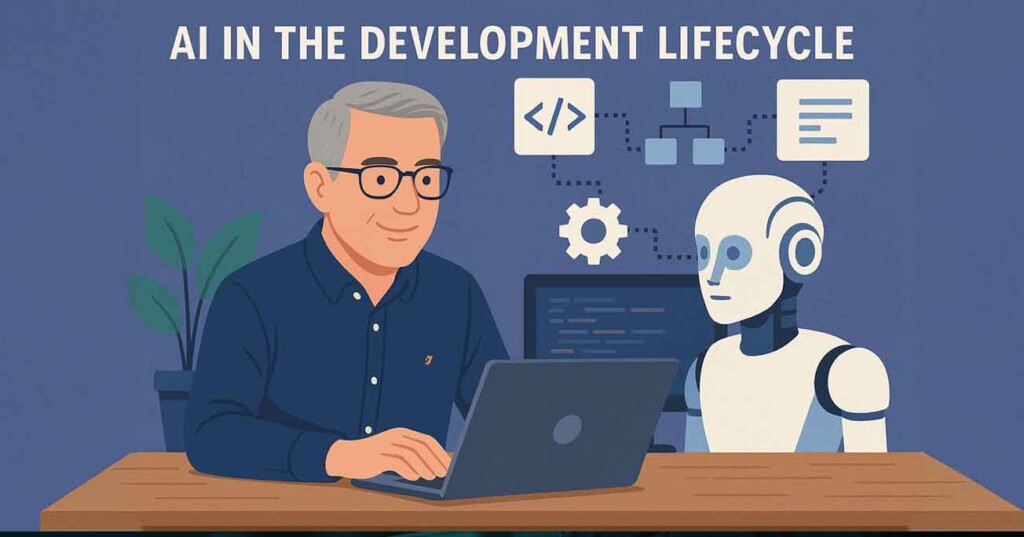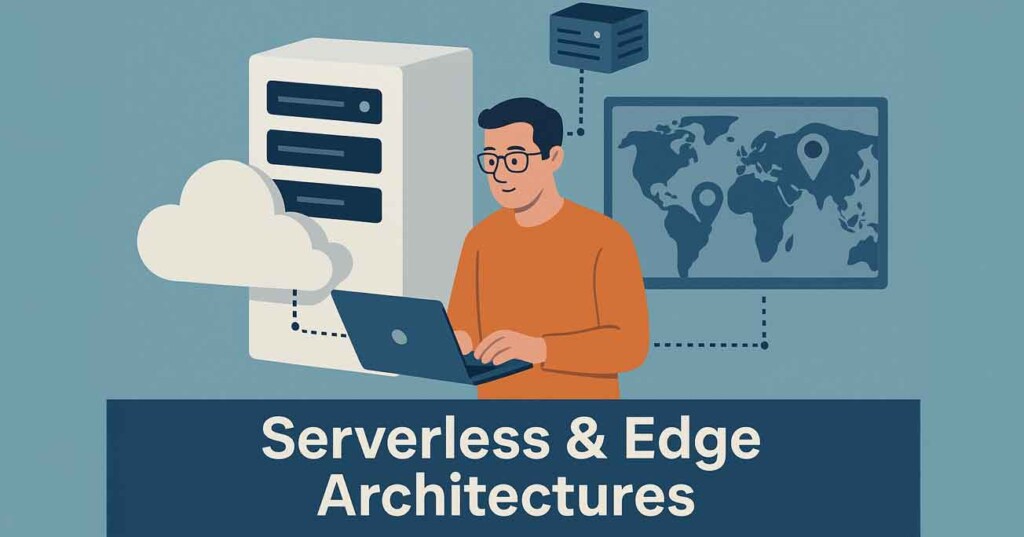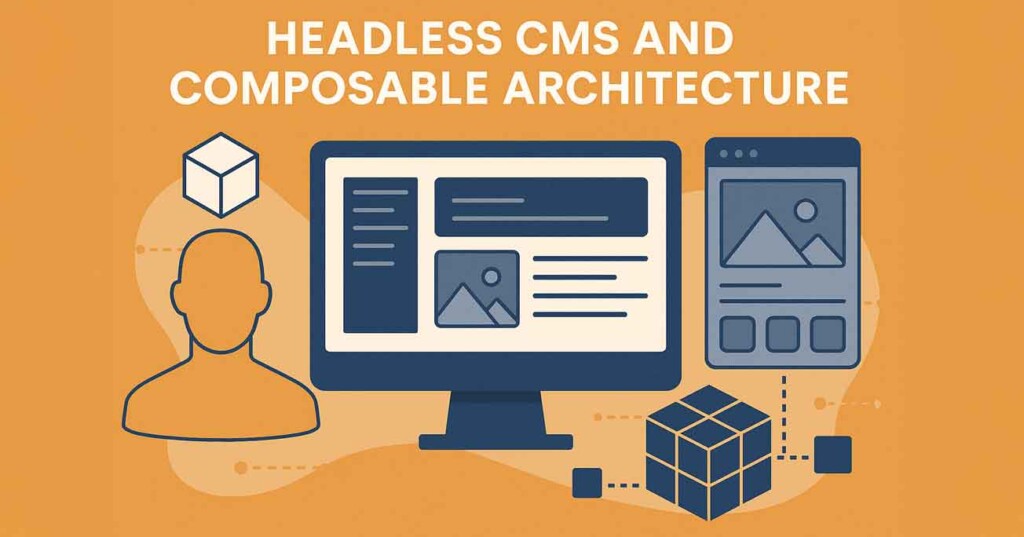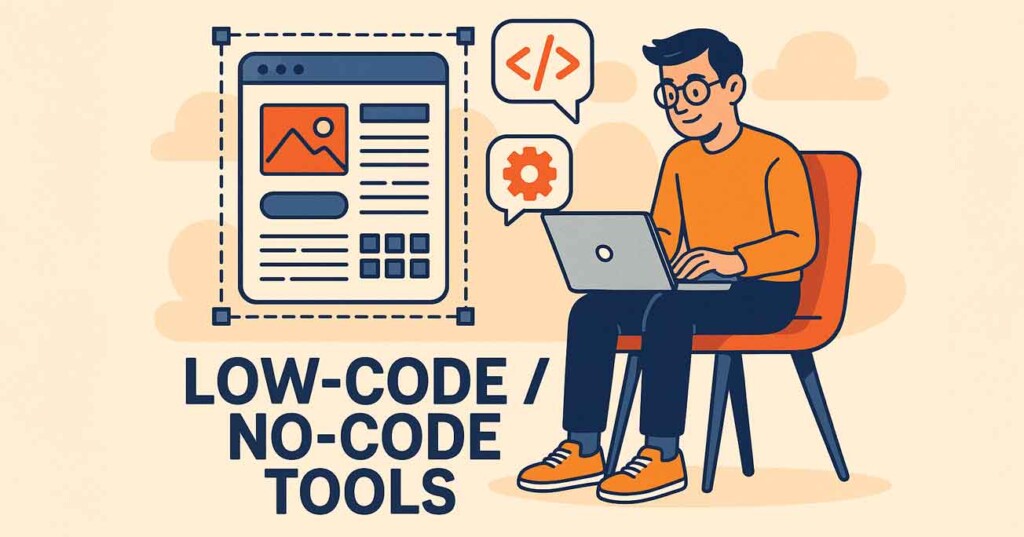
Guide to Web Application Development
Table of Contents
TLDR
In 2025, web apps aren’t just digital touchpoints, they’re the product, the brand, and the growth engine.
To stay competitive, founders and CTOs need to rethink how they build and deliver. This means:
- AI is in the stack: from code to UX, but needs guardrails to avoid silent bugs and security risks.
- Serverless and edge architectures: offer speed and scale, but require observability and discipline.
- PWAs give you app-like experiences without the cost of native builds, perfect for mobile-first strategies.
- Headless CMS and composable stacks: unlock speed and flexibility, but come with integration overhead.
- Low-code tools: accelerate delivery, especially for internal tools, but demand governance to avoid sprawl.
- Security, performance, and compliance: are non-negotiable. If you neglect them, you’ll pay for it later.
- Stack decisions are now strategic, not just technical, they affect team velocity, UX, and total cost of ownership.
UK and US markets share the same pressure to move fast, but differ on privacy, team structure, and risk appetite.
If your web platform can’t move as fast as your business, it’s already holding you back.
Now’s the time to future proof your architecture, empower your team, and deliver web experiences that scale.
Introduction

Over the past 12 months, I’ve noticed a shift. Web app development is no longer just about building features, it’s now about delivering the product, the brand, and the commercial engine, all through the web browser.
Clients are asking for faster launches, smarter platforms, and more flexibility across devices. Whether it’s a customer-facing mobile app or a desktop user interface, expectations have changed. Meanwhile, the tech stack has exploded: AI is writing code, serverless infrastructure is replacing traditional hosting, and composable architectures are giving teams more control (and more complexity) than ever.
But here’s the problem: too many businesses are still building with a 2019 mindset. Outdated CMSs, clunky user interfaces, mobile as an afterthought, and no clear technical direction. It’s not just inefficient, it’s costing them growth.
The way you build your web app is now a strategic decision, not a technical one.
This guide is my take on what’s changed and what matters now. If you’re a founder, CTO or digital lead trying to make better decisions about your next web app, or trying to fix a platform that’s holding you back, this is for you.
What follows isn’t code-level detail. It’s the strategic view: the technologies reshaping web app development, the risks worth avoiding, and the decisions that will actually help you move faster, without creating a mess behind the scenes.
• • •
The Evolution of Web Apps: From Pages to Platforms

Ten years ago, a “web app” usually meant a backend bolted to a website, basic logins, dashboards, maybe some content wrapped in a CMS. It worked. But it wasn’t built for scale, speed, or modern user expectations.
That’s changed. Today, web apps are the business. They handle onboarding, payments, support, analytics, even the product itself. In many cases, there’s no native app or offline alternative. The web browser is where everything happens.
At the same time, the stack has matured. Front-end frameworks like React and Next.js are standard. Headless CMSs have gone mainstream. And infrastructure has shifted to edge computing and serverless platforms that scale instantly, no servers, no DevOps overhead.
But what’s really changed is mindset. We’re no longer just building websites. We’re building web applications, end-to-end digital experiences with complex architectures, cross-functional teams, and measurable commercial impact.
Your web app isn’t a marketing asset. It’s a revenue platform.
And that means the way you approach design, delivery, and the web application development process needs to reflect that. Legacy platforms, inflexible tech, and bloated processes aren’t just annoying, they’re blockers to growth.
The next sections break down the key trends shaping how high-performing teams are building for now in 2025, and what you need to get right from the start.
• • •
AI in the Development Lifecycle

AI isn’t coming for web development. It’s already here, and it’s reshaping how teams work across the board.
At the code level, tools like GitHub Copilot and Amazon CodeWhisperer are now baked into web app development process. They autocomplete boilerplate, suggest functions, and even write unit tests. It’s not perfect, but it’s fast, and for experienced teams, it’s a genuine productivity multiplier.
Testing has shifted too. AI driven test generators and anomaly detection tools are helping QA teams catch bugs earlier, especially edge cases humans might miss. And when something goes wrong in production, AIOps platforms are flagging the root cause faster than traditional logging ever could.
On the front-end, AI is powering personalisation at scale, recommending content, adapting layout, and improving search. In some cases, it’s quietly rewriting the experience in real-time based on how users behave.
But it’s not all upside.
AI will speed up your team, unless it introduces silent failures at scale.
Poor prompts, unchecked hallucinations, or unreviewed code can quietly create security risks and technical debt. That’s why smart teams treat AI as an assistant, not an autopilot.
If you’re leading product or engineering, the job isn’t to block AI, it’s to make sure your teams are using it deliberately: clear guardrails, enforced review processes, and regular audits.
In the right hands, AI is a force multiplier. In the wrong ones, it’s a liability.
• • •
Serverless & Edge Architectures

A few years ago, using a cloud hosting provider meant spinning up a VM or managing containers on Kubernetes. In 2025, that’s the slow lane. Serverless and edge first architectures are where serious velocity lives.
With serverless, there’s no infrastructure to manage. You ship functions, not servers. Platforms like AWS Lambda, Google Cloud Functions, and Azure Functions scale automatically, charge by usage, and handle traffic spikes without blinking.
It’s not just for hobby projects anymore. Over 70% of AWS customers now run serverless workloads. Even regulated industries are moving key services over, often starting with internal tools or APIs built by in-house teams or external web app developers.
You don’t scale your infrastructure anymore. You scale your code.
Edge computing takes it one step further. By running code at the edge, close to users via CDNs like Cloudflare Workers or Fastly, you reduce latency and improve performance across regions. Personalisation, authentication, even A/B tests can now run in milliseconds at the edge, without touching your core backend development environment.
For apps that rely on speed, real-time dashboards, e-commerce checkouts, mobile UX, this makes a measurable difference. We’ve seen edge-native builds shave seconds off load times, which often translates directly into revenue for teams building custom web apps.
But it’s not plug-and-play. Cold starts, observability, and vendor lock-in are still real concerns. The smart play is to go hybrid: serverless where it makes sense, edge for performance-critical routes, and a fallback for anything that needs state or long-running processes.
Used well, this stack gives you speed, resilience, and massive flexibility, without the overhead of a traditional backend.
• • •
PWAs and Multi-Device UX

Users don’t care whether they’re on a website or a mobile app. They just want it to load fast, work offline, and do what they came for, without friction.
That’s why progressive web applications or progressive web apps (PWAs) are having a moment.
PWAs let you deliver native app features, offline support, push notifications, background sync, directly through the web browser. They can be installed to a user’s home screen, run full-screen, and behave just like a native app. But they’re built using standard web technologies like HTML, CSS and JavaScript. No App Store gatekeeping. No duplicate iOS/Android builds.
One codebase. All devices. No compromise.
For businesses, this is a huge win. You cut costs, reduce complexity, and still deliver a high-quality experience. Brands like Spotify, Uber, and Starbucks use PWAs under the hood, not because it’s trendy, but because it performs.
This shift matters even more as mobile now accounts for over 55% of web traffic in the UK and US. If your platform isn’t optimised for mobile-first interaction, you’re losing customers before they’ve even engaged.
And it’s not just about offline support. The tech behind building web apps like PWAs, service workers, caching, and background sync, also boosts speed and reliability, even when users are online. That makes them a powerful option for dynamic web apps where performance and UX matter.
Are PWAs right for everything? No. But for content-heavy sites, e-commerce, SaaS dashboards, and customer-facing platforms, they’re often the most effective route to market, especially when combined with user feedback to refine the experience.
• • •
Headless CMS and Composable Architecture

The days of squeezing your product around the limitations of a traditional CMS are (or should be) over.
In 2025, the move is headless. That means separating your content from how and where it gets delivered. Platforms like Contentful, Sanity, and Strapi let teams manage content centrally and serve it anywhere, web, mobile, smart devices, via API.
One content engine. Unlimited front-ends.
This decoupling is at the heart of what’s now called “composable architecture.” Instead of buying into a monolithic system that does everything badly, you assemble best-in-class tools, CMS, commerce, search, analytics, that talk to each other cleanly via APIs.
It’s faster to build a web app this way. Easier to scale. And far more flexible when business needs shift mid-project.
For marketing teams, it means real agility: they can publish and iterate without developer bottlenecks. For dev teams developing web apps, it means cleaner separation of concerns, faster builds, and more control over the stack.
This is particularly valuable for interactive web apps, where the front end needs to evolve rapidly, independently of the content system behind it.
The trade-off? More moving parts. A composable stack demands smart integration, clear ownership, and a tight grip on dependencies. Without that, your web app project can unravel fast.
But when used well, this setup is a competitive edge, especially for scale-ups and digital-first businesses where speed, experimentation, and cross-channel consistency actually move the needle.
• • •
Low-Code / No-Code Tools

Not every digital problem needs a full dev sprint. Sometimes, it just needs solving, fast.
That’s why low-code and no-code tools have earned their place in the modern web stack. Platforms like Power Apps, OutSystems, Webflow, and Bubble now sit alongside traditional development, not as replacements, but as accelerators for rapid development.
The smartest teams don’t choose between code and no-code—they use both.
In the right hands, these platforms help teams ship faster: internal dashboards, campaign microsites, web pages, and automated workflows that would otherwise clog up your dev backlog.
They also empower non-technical teams to move independently. Ops teams build tools. Marketing spins up landing pages. Analysts automate reports. This lets your developers focus on more complex front end and backend development, or that next big web app idea.
Used strategically, low-code tools can be part of a successful web app, especially when paired with robust database management systems and API integrations that scale.
But there are risks. Poorly governed no-code builds can introduce security holes, create silos, or balloon into long-term maintenance debt. That’s why governance matters: set boundaries, review regularly, and treat these tools with the same rigour you apply in formal website development.
In the UK and US, low code is no longer niche. Nearly 90% of enterprises report active use. The question isn’t whether your teams are using it, it’s whether they’re using it well.
• • •
What to Watch Out For: Pitfalls of Modern Web Dev

For all the progress in tooling and architecture, building a modern web app still comes with traps, and they’re not always where you’d expect.
AI that moves fast, but breaks things quietly
AI-assisted coding tools are powerful, but they’re also unpredictable. Developers can move faster, yes, but without the right guardrails, they’re also introducing silent bugs, inconsistent patterns, or worse, security flaws.
If no one’s reviewing the AI’s output, you’re not speeding up—you’re storing up problems.
When AI touches areas like user authentication, server-side logic, or critical workflows tied to user accounts, those bugs aren’t just technical, they’re security and trust risks.
Serverless and edge, without observability
Function-based code and global edge deployments sound great on paper. But once something breaks, tracing the root cause across multiple regions or event triggers is a nightmare. Logging, monitoring, and testing need to be baked in from day one.
Microservices sprawl
Going composable is smart, until you’re juggling 20 APIs, five internal services, and a dozen loosely coupled modules. Without clear documentation and ownership, what started as clean frontend and backend development quickly becomes a mess.
Overuse of low-code tools
Used well, low-code platforms are great for custom web applications. But when business-critical flows or sensitive data are built across random dashboards, unsupported integrations, and shadow IT, the cracks appear fast.
Think long-term: what happens when a low-code-built flow controls checkout logic or interactive elements tied to core engagement?
Compliance blind spots
GDPR, CCPA, CPRA, if your platform is handling personal data across user accounts, different services, or cloud providers, you need to know where that data lives, how it’s accessed, and how long it stays there. “We’ll sort that later” isn’t a strategy.
• • •
Strategic Tech Stack Decisions in 2025

Choosing your stack used to be about developer preference. Now it’s a commercial decision that shapes speed, cost, team velocity, and ultimately, product-market fit.
The wrong stack slows you down. The right one lets you move without friction.
Here’s what to keep in focus:
Frontend frameworks
React and Next.js still dominate for good reason: fast, flexible, and supported by a massive talent pool. They’re not just JavaScript libraries, they’ve become entire ecosystems. But alternatives like Svelte or Vue can offer lighter bundles and better performance for leaner builds, especially for teams who know the JavaScript code inside out.
Don’t pick based on hype. Use SSR, static generation, or hydration intentionally, not just because the frontend framework defaults to it. Each rendering strategy affects SEO, load speed, and complexity.
Backend and architecture
Early-stage? A monolith will get you moving faster. Scaling up? Modular monoliths or microservices can give you the flexibility to divide teams and deploy independently.
Composable architecture makes even more sense when you’re integrating third-party services via application programming interfaces (APIs). But don’t overdo it. You probably need three services, not twelve.
Hosting services and infrastructure
Use managed hosting services wherever possible. AWS, Azure, and GCP are the enterprise default, but Vercel, Netlify, and Render offer high-speed global deployment with zero DevOps lift for smaller teams.
Serverless? Ideal for bursty workloads. Containers or long-running services? Better for jobs that demand sustained compute or consistent state.
Content and data
If your site needs publishing agility, like marketing, blogs or e-commerce, use a headless CMS. But make sure your team can actually use it. There’s no point in flexibility if your editors are blocked.
For data, managed Postgres, Firestore or other cloud databases will serve most use cases. Don’t architect for hyperscale unless you’re already there.
Development experience
Pick tools your team understands and your business can support. If your team is fluent in a specific coding language or has built standards around a particular version control system, don’t break that flow unless there’s a clear commercial upside.
The same goes for libraries, tools, and DevOps: choose for speed and familiarity, not trend-chasing.
• • •
Security, Performance & Compliance: Non-Negotiables

Speed and innovation are great, until you trip over a security breach, a slow load time, or a GDPR fine. These aren’t just technical concerns anymore. They’re business critical, especially when you’re building scalable web applications with real user traffic and data.
Security needs to shift left
By the time an issue reaches production, it’s already cost you. In 2025, DevSecOps is standard. That means automated code scanning, dependency checks, and permission audits built into your pipeline, not left to chance.
If your dev team isn’t thinking about security daily, it’s already a risk.
AI generated code only amplifies this. Tools like Copilot can suggest functions that look correct but introduce vulnerabilities. Whether you’re coding in modern programming languages or reviewing AI assisted commits, human oversight is essential.
And when you’re handling user logins, payments, or anything that depends on a secure internet connection, security failures escalate quickly, from minor bugs to public incidents.
Performance is revenue
Google’s Core Web Vitals aren’t just SEO metrics, they’re user experience benchmarks. If your app lags, users bounce. If mobile pages take more than 3 seconds to load, they leave.
Use code-splitting, asset compression, and edge delivery as standard. Real-time monitoring tools like Lighthouse CI, Sentry, or Datadog help you spot issues that aren’t visible until they hit production, like latency from a distant web server or unoptimised components in your frontend framework.
Faster apps convert better. End of story.
Compliance isn’t a checkbox
Between GDPR, CCPA, and CPRA, data privacy is now a product feature. Cookie consent, encryption-at-rest, regional data storage, and user deletion flows aren’t optional, they’re table stakes.
If you’re still treating compliance like a legal layer on top of traditional web apps, you’re behind. Privacy should be designed into the architecture, especially when your stack includes third-party services or distributed infrastructure.
Security. Performance. Compliance.
Miss any one of them, and it doesn’t matter how beautiful or innovative your app is, it’s at risk.
• • •
The UK vs USA Landscape: Key Differences and Shared Challenges

On paper, the UK and US web development scenes look similar. In reality, the priorities, and constraints, can be very different.
Regulation: UK leads on privacy, US moves faster on innovation
The UK (and EU by extension) pushes harder on data privacy. GDPR is still the baseline, and if you’re operating across Europe, you need to be rock-solid on consent, retention, and cross-border data flows.
In the US, it’s messier. State laws like CCPA and CPRA set the tone, but there’s no federal standard yet. That means more room to move fast, but more complexity if you’re scaling nationally.
If you’re building in the UK, compliance has to be baked in. In the US, flexibility wins—but with risk.
Talent availability
In the US, there’s a deeper pool of specialist talent, AI engineers, DevOps, edge specialists. But it’s expensive and competitive. UK teams often run leaner, with more generalists, and get more creative with tooling as a result.
Hybrid and remote setups are the norm in both regions now, but timezone gaps and compliance issues mean UK-based agencies sometimes have an edge with EU-aligned businesses.
Stack preferences
US teams are more likely to jump on the latest stack, Svelte, Solid, AI-generated pipelines, especially in VC-backed startups. In the UK, there’s often a stronger emphasis on sustainability, supportability, and getting more from fewer tools.
That’s not a limitation, it’s a mindset. UK teams tend to focus on build quality, not just build speed.
Shared challenges
Both markets face the same issues: developer scarcity, technical debt, rising expectations, and pressure to ship faster with fewer bugs. AI is helping, but only when paired with clear leadership and tight feedback loops.
• • •
What Founders and CTOs Should Do Next

If you’re leading a business with digital at its core, this isn’t the time to wait for the dust to settle. The tech stack has shifted. User expectations have shifted. Your operating model probably needs to shift, too.
Here’s what I’m advising clients right now:
Set a clear architectural direction
Whether you’re going monolith, headless, serverless or composable, decide it deliberately. Changing your architecture mid-build is expensive. Align your tech stack with where your business is going, not where it’s been.
Use AI, but set guardrails
AI can accelerate dev work, automate testing, personalise UX, and optimise ops. But only if it’s used wisely. Implement review protocols. Run security scans on all AI-generated code. And train your teams, prompting is now a skill.
Build mobile-first, not mobile-optional
With 55–60% of traffic coming from phones, your mobile UX is your product for most users. Make it fast, frictionless and installable where it counts (PWAs, FTW).
Create space for experimentation
If your dev team can’t test new tools, ship internal prototypes, or explore new integrations without hitting red tape, you’ll fall behind. Innovation needs room, even inside process-heavy orgs.
Invest in cross-functional delivery
The best results happen when product, marketing, design and engineering collaborate early. If your tech team is still receiving “final copy” in a Google Doc, you’re not set up to win.
Digital isn’t just a channel. It’s a capability.
Your web app is how customers experience your business. The decisions you make now will shape whether that experience is a constraint, or a competitive advantage.
• • •
Conclusion: Build for What Comes Next

Web application development in 2025 isn’t just about frameworks and features. It’s about speed to market. Operational flexibility. Security by design. And delivering something users actually want to use, on any device, anywhere.
We’ve moved beyond websites. You’re now building digital products with real commercial weight. That means every decision, architecture, tooling, governance, team structure, needs to support scale, clarity, and adaptability.
The goal isn’t just to ship. It’s to stay ahead.
If you’re still navigating legacy CMSs, fragmented codebases, or platforms that can’t keep up with your growth, you’re not alone. But you do need to move.
Start small if you have to. Redesign a workflow. Replatform a feature. Pilot a composable build. Test AI tools in your dev process. But start.
Because the businesses winning right now aren’t just the ones with the best ideas. They’re the ones with the clearest path to deliver them, fast, securely, and at scale.
• • •
Lets Talk
If you’re planning a new web application, or trying to fix one that’s slowing you down, I’d be happy to help. I work with founders, CTOs and digital teams to build scalable, flexible platforms that support real growth. Whether you need a second opinion on your tech stack or a strategic partner to help you move faster, feel free to get in touch.
• • •





